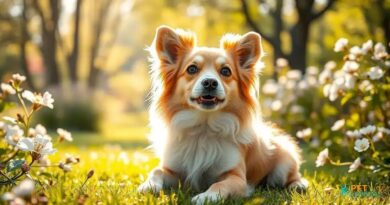What is: Angulation in dogs
What is Angulation in Dogs?
Angulation in dogs refers to the angles formed by the bones in a dog’s limbs, particularly at the joints. These angles are crucial for a dog’s movement, balance, and overall structure. Understanding angulation can help dog owners and breeders assess the physical capabilities and health of their dogs. Proper angulation contributes to a dog’s ability to perform various activities, from running to jumping, and can significantly impact their athletic performance.
The Importance of Angulation in Canine Structure
The angulation of a dog’s front and rear legs plays a vital role in its overall conformation. A well-angled dog will have a more efficient stride and better stability, which is essential for both working and companion breeds. Poor angulation can lead to a range of issues, including joint problems and decreased mobility. Therefore, evaluating angulation is a key aspect of dog breeding and training, ensuring that dogs can perform their intended functions effectively.
Types of Angulation in Dogs
There are two primary types of angulation to consider: front angulation and rear angulation. Front angulation refers to the angle formed by the shoulder blade and the upper arm, while rear angulation pertains to the angle between the thigh and the lower leg. Each type of angulation affects a dog’s movement differently, influencing how they walk, run, and turn. Understanding these distinctions is essential for anyone involved in dog breeding or training.
How Angulation Affects Movement
The way a dog moves is heavily influenced by its angulation. Dogs with proper angulation tend to have a smooth, efficient gait, allowing them to conserve energy while running or walking. In contrast, dogs with poor angulation may exhibit a choppy or awkward movement, which can lead to fatigue and injury over time. Observing a dog’s movement can provide valuable insights into its angulation and overall health.
Evaluating Angulation in Dogs
To evaluate a dog’s angulation, breeders and judges often use a combination of visual assessment and hands-on examination. They look for specific angles at the shoulder, elbow, hip, and stifle joints. This evaluation is typically performed during dog shows and breeding assessments. Understanding the ideal angulation for a specific breed is crucial, as each breed has its own standards and requirements.
Common Issues Related to Poor Angulation
Dogs with poor angulation may face several health issues, including hip dysplasia, elbow dysplasia, and other joint-related problems. These conditions can lead to pain, decreased mobility, and a lower quality of life. Additionally, poor angulation can affect a dog’s performance in various activities, from agility competitions to simple walks. Recognizing the signs of poor angulation early can help owners seek appropriate veterinary care and training.
Improving Angulation Through Training
While genetics play a significant role in a dog’s angulation, training can also help improve their movement and overall physical condition. Exercises that promote strength, flexibility, and coordination can enhance a dog’s ability to move efficiently. Working with a professional trainer or canine physical therapist can provide tailored strategies to address specific angulation issues and improve a dog’s performance.
The Role of Nutrition in Angulation
Nutrition is another critical factor that can influence a dog’s angulation and overall health. A balanced diet rich in essential nutrients supports bone and joint development, which is particularly important for growing puppies. Ensuring that dogs receive adequate vitamins and minerals can help maintain proper angulation and prevent issues related to poor joint health. Consulting with a veterinarian about dietary needs is essential for optimal canine health.
Conclusion: The Significance of Angulation in Dogs
Understanding angulation in dogs is essential for breeders, trainers, and dog owners alike. It impacts a dog’s movement, health, and overall quality of life. By recognizing the importance of proper angulation and taking steps to evaluate and improve it, individuals can ensure their dogs lead active, healthy lives. Whether through breeding practices, training, or nutrition, prioritizing angulation is key to fostering well-rounded canine companions.



